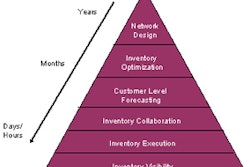While pricing is a critical component of any business, many manufacturers have inadvertently started executing before the right price has been set. Why is this? Prices are generally set to maximize margins, given supply and demand, as well as competition in the market. However, maximizing margins does not maximize profitability. If you execute a pricing strategy before having a completely accurate picture of profitability, you will be managing and enforcing prices that are not optimal, and this can have a huge impact on your bottom line. In the $2 trillion sector of complex, asset-intensive manufacturers that includes chemicals, steel, semiconductors, electronic components, paper, packaging, plastics and several others, this lack of insight into profitability represents $100 billion in annual revenue losses.
In order to truly get the most out of your pricing management and enforcement initiatives, it is critical to use granular product and deal profitability information to target the right prices. It is not until the best strategic pricing levels are known that you can execute a set of prices that will optimize profitability. Using strategic pricing as the foundation for price setting ensures that pricing solution initiatives to manage and enforce prices, will maximize corporate profit and return on asset (ROA) goals.
Maximizing Margins Does Not Maximize Profits
Pricing is obviously a key element in a company's efforts to maximize profitability. It is a strategic lever that can be used to affect the demand for products. However, if target prices are not set based on an in-depth knowledge of profitability (such as by product, customer or deal), they will not maximize overall company profits. Setting prices based on margin alone yields the "wrong" price.
Although margin is an important metric, profits cannot be optimized using margin alone. This can only be done by taking production speeds into account. Combining margin and production speed yields a time-based metric of profitability called "profit per minute." And since companies report profits based on time periods such as a year or quarter and there are only a given number of minutes in a year (525,600 to be precise), profit-per-minute is a more accurate measurement of product profitability.
To demonstrate the impact that margin-only approaches can have, let's take an example of how a company might emphasize one product over another. (See Figure 1.)
Figure 1: Margin-Only and Profit-per-Minute Approaches Yield Dramatically Different Profitability Rankings
Based on margin alone, Product A is more profitable than Product B. However, if we incorporate the rate at which each product is made, we come up with a different metric.
Rather than margin, we have a metric that production speed to yield profit-per-minute for each product. Since Product B is made much faster than Product A, Product B has a higher profit-per-minute than Product A. Using profit-per-minute as the criterion for profitability rather than margin alone we get a very different picture. In this particular example, choosing to make Product A instead of Product B would cost the company $1.58 million in profit over the course of a year.
Why Has Profit-per-minute Not Been Used?
If profit-per-minute is a much better guide than margin alone to ensure optimal profitability, why have companies not used it? Actually they have long known the importance of a production speed's contribution to profitability. But they had no way to combine production run data with margin information. With the two-product example above, the calculation is very simple. However, when a company makes hundreds or thousands of products and sells them to hundreds of customers, the problem becomes overwhelming. It becomes nearly impossible to know profit-per-minute at a granular level — by product, by customer, by market, by region or by production facility. So companies have settled for margin alone as the best possible metric to maximize profitability.
Profit-per-minute: The Operational Equivalent of Return on Assets (ROA)
For asset-intensive manufacturers maximizing the return on their huge investment in production facilities is critical. While typically reported as a percentage, return on assets (ROA), is time-based. ROA is perhaps the key measure of profitability for shareholders and the major driver of stock price. It is reported for a year or quarter and so is in essence a profit-per-year or per-quarter value. Profit-per-minute is simply ROA at the product (or customer, deal, market, region, plant) level. Using it as an operational metric will thus ensure that the daily, weekly or monthly decisions made by sales, marketing, finance and production will maximize overall company ROA at the end of the fiscal year.
Using Profit-per-minute Helps Make Optimal Profit-driven Decisions
So how would we use profit-per-minute to make key decisions? Consider Figure 2. The vertical axis shows the traditional metric for profitability, margin per unit. The horizontal axis shows production velocity in units per minute. The topographical curves represent equal values of profit per minute. A higher-margin/lower production speed product might generate the same profit per minute as a lower-margin/higher-speed product. A constant profit-per-minute curve will also translate into a specific return on assets (ROA) percentage. For a company's overall ROA target, we can translate this into a profit-per-minute value. The bubbles can represent products, customers, deals, regions or production facilities. We can then evaluate every product, customer, deal, region or production facility based on its profit per minute and how that compares to the company target value and also to target ROA. This approach provides a common metric and vocabulary across an entire company to ensure optimal decisions are made.
Figure 2: Products with Above-Average Margin May Actually Not Meet Corporate ROA Goals (Product C) While Below-Average Margin Ones May Exceed Them (Product D)
Use Profit-per-minute to Establish Strategic Pricing
Let us look at the ways in which a profit-per-minute approach can dramatically improve profitability by suggesting strategic pricing levels. First of all, consider Product C. It has an above-average margin but does not meet the company target profit-per-minute/ROA target goals. By looking at the chart, we can see that it would take a quite large increase in price to increase margin to the point where a significant increase in profit-per-minute/ROA would occur. (The profit-per-minute/ROA curves are just too vertical in this area of the chart.) If the market could bear such an increase, it should be implemented. In fact any possible price increase should be applied because of Product C's under-target profitability. However, if there was no realistic possibility of a price increase, productivity improvements should be investigated because just a small increase in productivity could have quite a dramatic impact on profitability. (A small move to the right horizontally will produce a significant increase in profit-per-minute.)
Now consider Product B. Despite its below-average margin-per-unit, it meets the target profit-per-minute/ROA company goals. If the market can bear it, just a small increase in price could easily make B even more profitable, since the profit-per-minute curves are very horizontal in this area of the chart.
If we now look at Product D, this product has a margin-per-unit equal to the company average but it generates profits very quickly due to its production run-rate. The size of the bubble indicates that the volume for this product is quite a bit lower than that of Products B or C. A small decrease in price could conceivably increase demand for this product and therefore increase the profit it generates over the course of the fiscal year. Looking at margin alone, it is unlikely a price decrease would have been considered for this product because the company would not have wanted to reduce its margin below the company average. However, the profit-per-minute view clearly shows that this is possible while still maintaining a greater-than-average profit per minute for Product D.
Product F is a clear winner — a much higher-than-average margin-per-unit and also a very high profit-per-minute. In this case, aggressive marketing campaigns could be conducted to increase demand and the volume for this product (as they could be for Product D, too). However, a significant price decrease could also be considered without sacrificing profitability as another method of increasing demand substantially.
Product E is unfortunately a clear loser. Unless a significant price increase and productivity gains can be implemented, it should be considered whether to shift the production capacity this product takes to more profitable products.
These possible pricing strategies are based on individual products' position on the Figure 3 topographical chart — i.e. their profit-per-minute status. The possible strategies are shown in Figure 3.
Figure 3: The Position of A Product in the Profit-per-minute View Determines Possible Strategies Including Price Increases and Decreases
Using Strategic Pricing as a Lever
Knowing profit-per-minute at a detailed level enables strategic pricing changes for products based on their profit-per-minute values relative to company targets. But consider the possibility that the bubbles in the charts represented customers or deals. Prices can be decreased to increase demand from highly profitable customers or increased to drop demand from less profitable ones. Deals can be put together with pricing that will meet or exceed company target profit-per-minute/ROA goals.
Profit-per-minute removes the self-imposed constraints that might be present with companies trying to increase or maintain margin per unit numbers. It allows pricing to be set strategically knowing its impact on profitability, even if that might mean lowering the price on a below-average margin per unit product.
Once target prices are determined based on a profit-per-minute approach, market and competitive conditions can be brought into consideration and prices adjusted accordingly. When prices have been finalized, they can be fed to price management and enforcement systems. But without first knowing the relation of prices to product, customer or deal profitability, price management and enforcement is not based on a solid foundation.
Until recently, there was no easy way to use strategic pricing as the foundation for pricing initiatives. Determining profitability based on profit-per-minute for manufacturers making hundreds or thousands of products for numerous customers in multiple plants was an insurmountable problem. However, progressive manufacturers are now employing solutions that encompass both margin and velocity information to base pricing initiatives on granular profitability information. Manufacturers can now use strategic pricing to execute prices that will put that missing $100 billion a year back into their bottom lines.
About the Author: Richard Batty, director of Product Marketing at Maxager, is a 22-year veteran of the IT industry with experience in marketing, product management and operations. He has a background at Hewlett-Packard and an IPO startup. He may be reached at [email protected] .
















![Pros To Know 2026 [color]](https://img.sdcexec.com/mindful/acbm/workspaces/default/uploads/2025/08/prostoknow-2026-color.mduFvhpgMk.png?ar=16%3A9&auto=format%2Ccompress&bg=fff&fill-color=fff&fit=fill&h=135&q=70&w=240)


